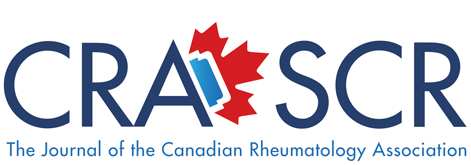Fall 2022 (Volume 32, Number 3)
Hire a Scribe. Get a Life!
By Vandana Ahluwalia, MD, FRCPC; Dilnoor Sidhu, MSc; Fallon Dennis; and
Monish Ahluwalia, MSc
Download PDF
Electronic medical records (EMRs) have revolutionized medical care in Canada. Physicians are able to record clinical information legibly, and access laboratory reports, radiology reports, and hospital reports at the tips of their fingers. Despite this, EMRs are cumbersome as they were not designed by physicians, and still require significant data entry for optimal patient care. The need for data entry will only increase if value-based payments are to be implemented with standardized metrics. Unfortunately, the unintended consequences of EMRs have led to an increased physician-computer interaction (as opposed to physician-patient interaction), which is resulting in increased physician burnout. According to the 2021 Ontario Medical Association burnout task force report, the first recommendation was to “streamline and reduce required documentation and administrative work.” In that report, the “use of medical scribes, particularly in relation to electronic medical documentation requirements,” was recommended.1 Despite the fact that scribes are commonly used in the United States, Canadian physicians have yet to adopt this model of care.
Three years ago, I hired a medical scribe. It was one of the best things I have done for my patients and my practice. A medical scribe is defined as “an unlicensed person hired to chart at the direction of a physician or practitioner, with the goal of allowing the physician to spend more time with the patient and have accurate documentation.”2 They can be pre-med students, post-grad students, or others without any science education.
The human scribe comes into the room with me (consented by the patient) and records the medical encounter including the history, physical examination, and the impression and plan. At the end of the day, we review all the notes in detail and ensure they are ready to be faxed to the referring physician.
With documentation being contemporaneous with the encounter, I have more face-to-face time with the patients, reduced clinic wait times, and have increased the number of patients seen per day. I still have enough energy, at the end of the day, to do the things I love to do at home.
Since 2021, I have hired and trained two more scribes for my rheumatology colleagues in our office. This has inspired me to create a Rheumatology Scribe Training Program to standardize the process. If we want this to be successful, more work needs to be done to understand the time and cost to hire, train, monitor and evaluate scribes for physician support in Canada. Insights gained by medical associations and government support will go a long way to making this a reality.
For a human scribe, sustainability is always the question. Although my scribe has been with me for 3 years, turnover typically occurs after 1-2 years. Virtual scribes that work remotely can improve the stability of this workforce, as more than one person may be available for support. Additionally, our Rheumatology Scribe Training Program hopes to make training a faster and easier process, so that the scribe is functional within 3 months. Artificial-intelligence-supported scribing may reduce turnover and decrease costs, but more work needs to be done to ensure accurate and flexible automated documentation of complex patient encounters.
In the end, scribes are not a replacement for EMR redesign, and we should continue to advocate for user interfaces that best suit physician needs. Until then, scribes can increase clinic productivity, reduce physician burnout, maintain patient satisfaction, and perhaps even increase career length. Hire a scribe! Get a life!
Vandana Ahluwalia, MD, FRCPC
Former Corporate Chief of Rheumatology,
William Osler Health System
Brampton, Ontario
Dilnoor Sidhu, MSc
Lead Medical Scribe
Brampton, Ontario
Fallon Dennis
BMSc Candidate (Class of 2023)
University of Western Ontario
Lead Medical Scribe, Training Programme Development
London, Ontario
Monish Ahluwalia, MSc
MD Candidate (Class of 2023)
University of Toronto
Toronto, Ontario
References:
1. Ontario Medical Association, 2021. Healing the Healers: System-Level Solutions to Physician Burnout. [online] Toronto: Ontario Medical Association. Available at www.oma.org/uploadedfiles/oma/media/pagetree/advocacy/health-policy-recommendations/burnout-paper.pdf. Accessed August 5, 2022.
2. Gidwani R, Nguyen C, Kofoed A, et al. Impact of Scribes on Physician Satisfaction, Patient Satisfaction, and Charting Efficiency: A Randomized Controlled Trial. The Annals of Family Medicine. 2017; 15(5):427-433. doi:10.1370/afm.2122.
|




